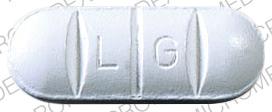Biltricide and Alcohol/Food Interactions
There is 1 alcohol/food/lifestyle interaction with Biltricide (praziquantel).
Praziquantel Food/Lifestyle
Moderate Food Interaction
ADJUST DOSING INTERVAL: Administration with food increases the oral bioavailability of praziquantel. The mechanism has not been described. In nine healthy volunteers, administration of praziquantel (1800 mg single oral dose) following a high-fat meal increased the mean praziquantel peak plasma concentration (Cmax) and area under the concentration-time curve (AUC) by 243% and 180%, respectively, compared to administration under fasting conditions. Administration with a high-carbohydrate meal increased these values by 515% and 271%, respectively, compared to fasting. Overall, the relative bioavailability was increased by a factor of 2.72 and 3.98 with the high-fat and high-carbohydrate meals, respectively. The time to reach peak concentration (Tmax) and elimination half-life (T1/2) were not significantly altered.
Coadministration with grapefruit juice may increase the oral bioavailability of praziquantel. The proposed mechanism is inhibition of CYP450 3A4-mediated first-pass metabolism in the gut wall induced by certain compounds present in grapefruit. In 18 healthy volunteers, administration of praziquantel (1800 mg single oral dose) with 250 mL of commercially squeezed grapefruit juice resulted in increases in the mean praziquantel Cmax and AUC of 63% and 90%, respectively, compared to administration with water. The Tmax and T1/2 were not significantly altered. The pharmacokinetics of praziquantel were subject to a high degree of interpatient variability with and without grapefruit juice.
MANAGEMENT: To ensure maximal oral absorption, praziquantel should be administered with meals. Administration with grapefruit juice may further increase pharmacologic effects of praziquantel, including adverse effects such dizziness, abdominal discomfort, and nausea.
References (2)
- Castro N, Jung H, Medina R, Gonzalez-Esquivel D, Lopez M, Sotelo J (2002) "Interaction between grapefruit juice and praziquantel in humans." Antimicrob Agents Chemother, 46, p. 1614-6
- Castro N, Medina R, Sotelo J, Jung H (2000) "Bioavailability of praziquantel increases with concomitant administration of food." Antimicrob Agents Chemother, 44, p. 2903-4
Switch to consumer interaction data
Biltricide drug interactions
There are 112 drug interactions with Biltricide (praziquantel).
Biltricide disease interactions
There are 4 disease interactions with Biltricide (praziquantel) which include:
More about Biltricide (praziquantel)
- Biltricide consumer information
- Check interactions
- Compare alternatives
- Pricing & coupons
- Reviews (3)
- Drug images
- Side effects
- Dosage information
- During pregnancy
- Drug class: anthelmintics
- Breastfeeding
- En español
Related treatment guides
Drug Interaction Classification
| Highly clinically significant. Avoid combinations; the risk of the interaction outweighs the benefit. | |
| Moderately clinically significant. Usually avoid combinations; use it only under special circumstances. | |
| Minimally clinically significant. Minimize risk; assess risk and consider an alternative drug, take steps to circumvent the interaction risk and/or institute a monitoring plan. | |
| No interaction information available. |
See also:
Further information
Always consult your healthcare provider to ensure the information displayed on this page applies to your personal circumstances.


